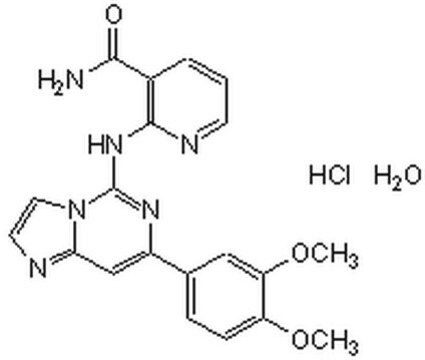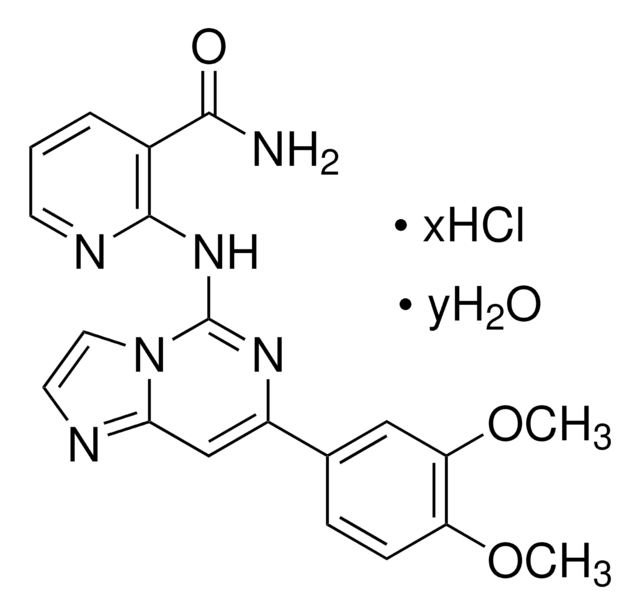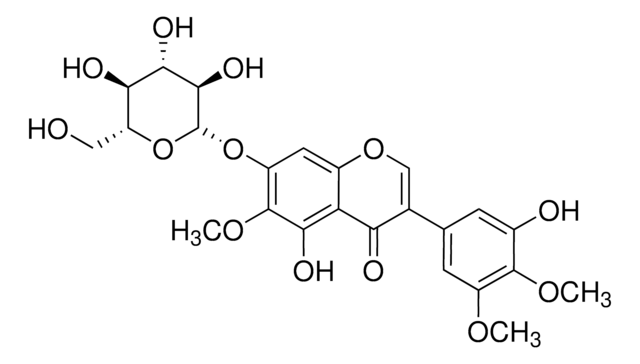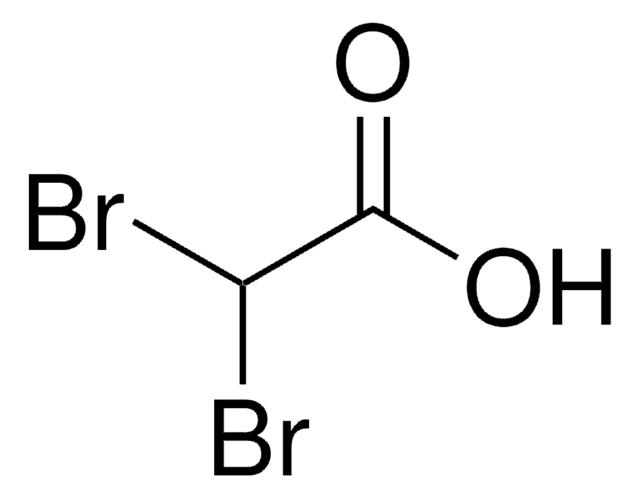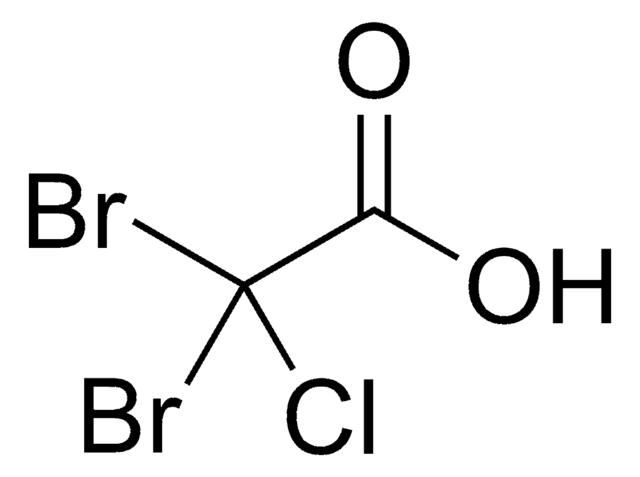574711
Syk Inhibitor
The Spleen Tyrosine Kinase Inhibitor, also referenced under CAS 622387-85-3, controls the biological activity of Spleen Tyrosine Kinase. This small molecule/inhibitor is primarily used for Phosphorylation & Dephosphorylation applications.
Synonim(y):
Syk Inhibitor, Spleen Tyrosine Kinase Inhibitor, 3-(1-Methyl-1H-indol-3-yl-methylene)-2-oxo-2,3-dihydro-1H-indole-5-sulfonamide
About This Item
Polecane produkty
Poziom jakości
Próba
≥97% (sum of two isomers, HPLC)
Postać
solid
siła działania
14 nM IC50
producent / nazwa handlowa
Calbiochem®
warunki przechowywania
OK to freeze
protect from light
kolor
deep orange
rozpuszczalność
DMSO: 5 mg/mL
Warunki transportu
ambient
temp. przechowywania
2-8°C
InChI
1S/C18H15N3O3S/c1-21-10-11(13-4-2-3-5-17(13)21)8-15-14-9-12(25(19,23)24)6-7-16(14)20-18(15)22/h2-10H,1H3,(H,20,22)(H2,19,23,24)
Klucz InChI
MLKHXLFEYOOYEY-UHFFFAOYSA-N
Opis ogólny
Działania biochem./fizjol.
Opakowanie
Ostrzeżenie
Inne uwagi
Informacje prawne
Kod klasy składowania
11 - Combustible Solids
Klasa zagrożenia wodnego (WGK)
WGK 1
Temperatura zapłonu (°F)
Not applicable
Temperatura zapłonu (°C)
Not applicable
Certyfikaty analizy (CoA)
Poszukaj Certyfikaty analizy (CoA), wpisując numer partii/serii produktów. Numery serii i partii można znaleźć na etykiecie produktu po słowach „seria” lub „partia”.
Masz już ten produkt?
Dokumenty związane z niedawno zakupionymi produktami zostały zamieszczone w Bibliotece dokumentów.
Nasz zespół naukowców ma doświadczenie we wszystkich obszarach badań, w tym w naukach przyrodniczych, materiałoznawstwie, syntezie chemicznej, chromatografii, analityce i wielu innych dziedzinach.
Skontaktuj się z zespołem ds. pomocy technicznej